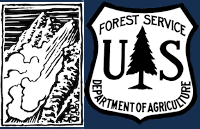North facing pit in Hellroaring Creek, Centennials
24-25
Island Park Obs
We rode around the north and south sides of Mt Jefferson, and Yale Creek. The danger has definitely dropped and the snowpack has stabilized a lot since I was last here on New Year's Eve when we experienced big thunderous collapses. The peak instability was around the first week of January. We could see evidence of just a few slides from that time. All the snowfall during that time made conditions dangerous then....but stable now. Since Xmas eve, this area has received snow containing 4.5-6.5 inche of water.
Today we didn't see any recent avalanches. We didn't experience any collapsing or cracking. We had stubborn stability tests with columns that took a lot of hard hits to break even where the snowpack was thinner.
I'm not ready to climb up steep chutes on Jefferson, but I'm feeling really comfortable in many other areas - especially places with a 5-6 ft deep snowpack.
Winds were moving a little snow. One wind slab/drift produced a shooting crack but we couldn't get any others to crack.
We skied to the top of Mt. Ellis via the ridge from the north. There was light wind on the ridge, otherwise calm. Snowing steadily this morning and tapered off by noon-1pm with skies clearing after noon. There were 2-4" of low density new snow. We dug a pit off the ridgeline on a northeast facing slope at 7,800' and one pit at the top of the burned slope, east facing at 8,100'. Profiles attached.
Snowpack on Mt. Ellis
We skied to the top of Mt. Ellis via the ridge from the north. There was light wind on the ridge, otherwise calm. Snowing steadily this morning and tapered off by noon-1pm with skies clearing after noon. There were 2-4" of low density new snow. We dug a pit off the ridgeline on a northeast facing slope at 7,800' and one pit at the top of the burned slope, east facing at 8,100'. Profiles attached.
The first pit had an ECTX and the second had propagation with extra force. There were 2mm facets 30cm off the ground in both pits which were slightly softer in the higher pit. Snow depth was 3-4 feet up high and around 2 feet lower in the thicker trees and along the trails.
Beyond what we saw today, evidence of good stability in the northern Gallatin Range also includes not having heard of any avalanches (or only 1-2 small pockets) breaking on the weak layers near the bottom of the snowpack during the 2-3 weeks of steady snowfall from late Dec to early Jan. The snowpack has had a break from loading for the last few days which has allowed avalanche potential to continue to become less likely.
In general, stability was good and we felt good skiing slopes steeper than 30-35 degrees, while exposing only one person at a time.
